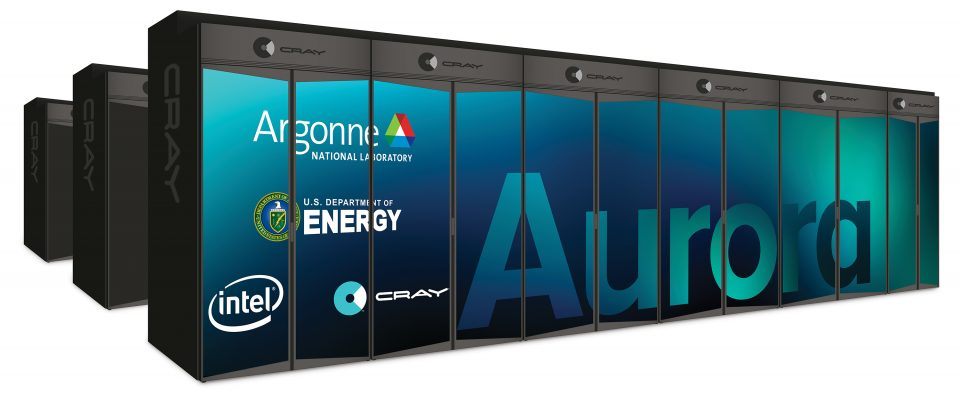 EMERGING TECH
EMERGING TECH
 EMERGING TECH
EMERGING TECH
 EMERGING TECH
EMERGING TECH
The U.S. Department of Energy has tapped Intel Corp. to build a massive new supercomputer that will surpass the capabilities of even the most powerful systems currently in existence.
The chipmaker said today that the planned system, dubbed Aurora, will provide an entire exaflop of performance when it comes online in 2021.
An exaflop equals a quintillion floating point operations per second, which is expressed as one followed by 18 zeros. That’s five times the maximum number of computations per second that can be carried out on the world’s fastest supercomputer, which is also operated by the Department of Energy.
The agency has budgeted more than $500 million for the construction of Aurora. Intel will develop the system in collaboration with supercomputer manufacturer Cray Inc. using its yet-unreleased next generation processors as building blocks.
The company will base Aurora on an unspecified future iteration of its Xeon central processing units, which dominate the market for server processors. Intel also plans to equip the system with the Xe series of graphics processing units that it’s aiming to release next year. Little is known about the Xe series other than the fact that the chips will use a 10-nanometer architecture.
The DoE’s decision to rely on Intel GPUs in Aurora represents a valuable endorsement for the company. When it launches next year, the Xe series will face off against products from Nvidia Corp. and Advanced Micro Devices Inc., which have maintained a duopoly in the graphics card market for two decades now. The inclusion of Xe chips in what may end up being the world’s most powerful supercomputer may make it a little easier for Intel to convince potential buyers
Besides the upcoming chips, Aurora will also make use of two other yet-unreleased Intel technologies. One is a future iteration of its Optane DC persistent memory, while the other is the Intel One application programming interface that the company previewed in December. The API aims to simplify the development of applications that use both CPUs and GPUs.
Intel will deliver Aurora to the Department of Energy’s Argonne National Laboratory in Chicago. The agency plans to harness the system for a wide variety of research applications, from testing the effectiveness of drugs to generating “extreme-scale” cosmological simulations.
The U.S. isn’t the only country that has set out to break the exaflop barrier. Japan’s RIKEN research institute and Fujitsu Ltd. are aiming to build their own exascale system by 2021 using ARM-based chips.
Support our mission to keep content open and free by engaging with theCUBE community. Join theCUBE’s Alumni Trust Network, where technology leaders connect, share intelligence and create opportunities.
Founded by tech visionaries John Furrier and Dave Vellante, SiliconANGLE Media has built a dynamic ecosystem of industry-leading digital media brands that reach 15+ million elite tech professionals. Our new proprietary theCUBE AI Video Cloud is breaking ground in audience interaction, leveraging theCUBEai.com neural network to help technology companies make data-driven decisions and stay at the forefront of industry conversations.